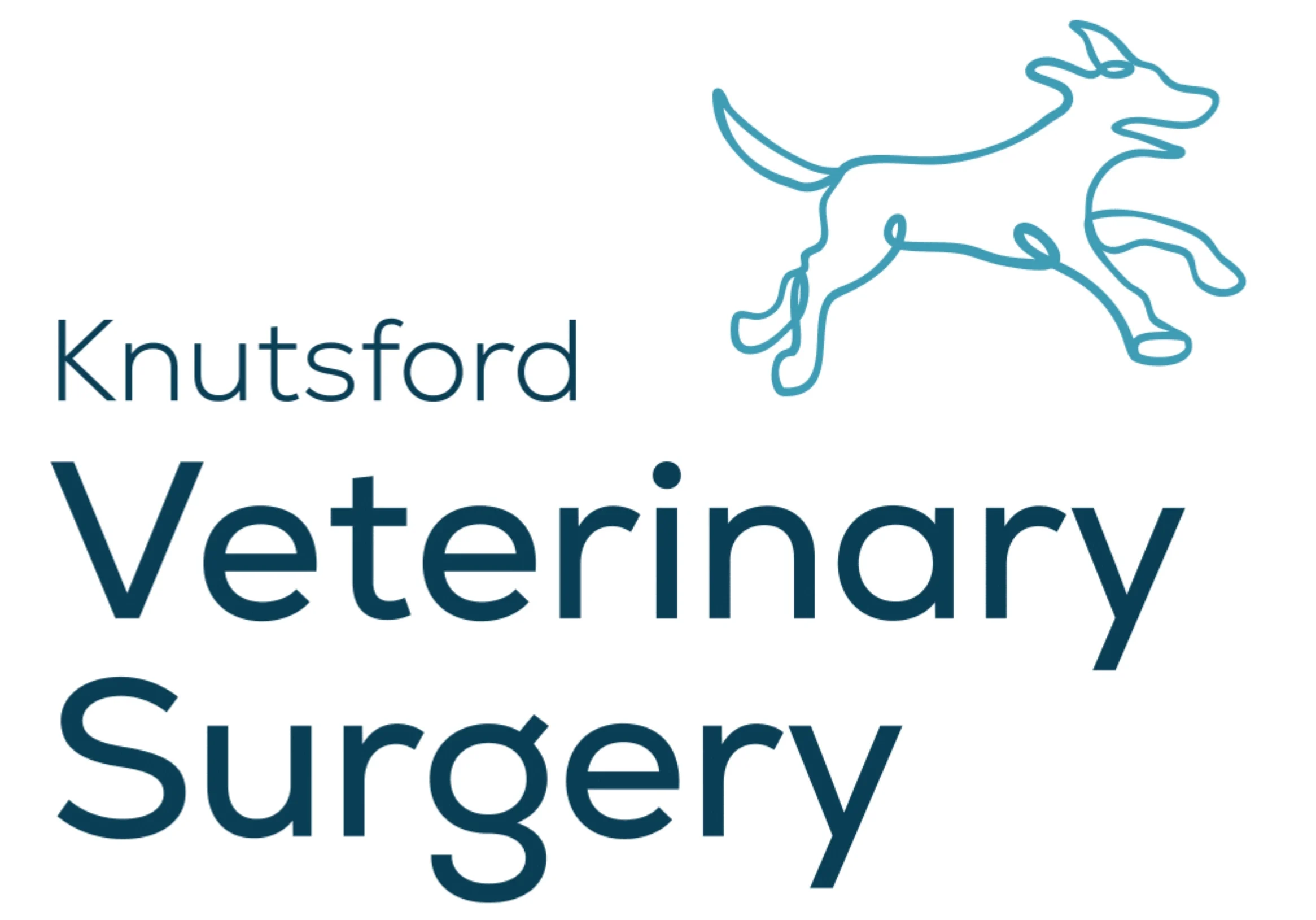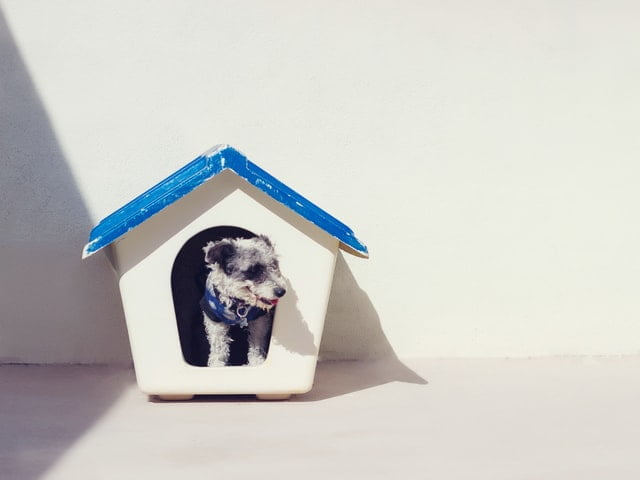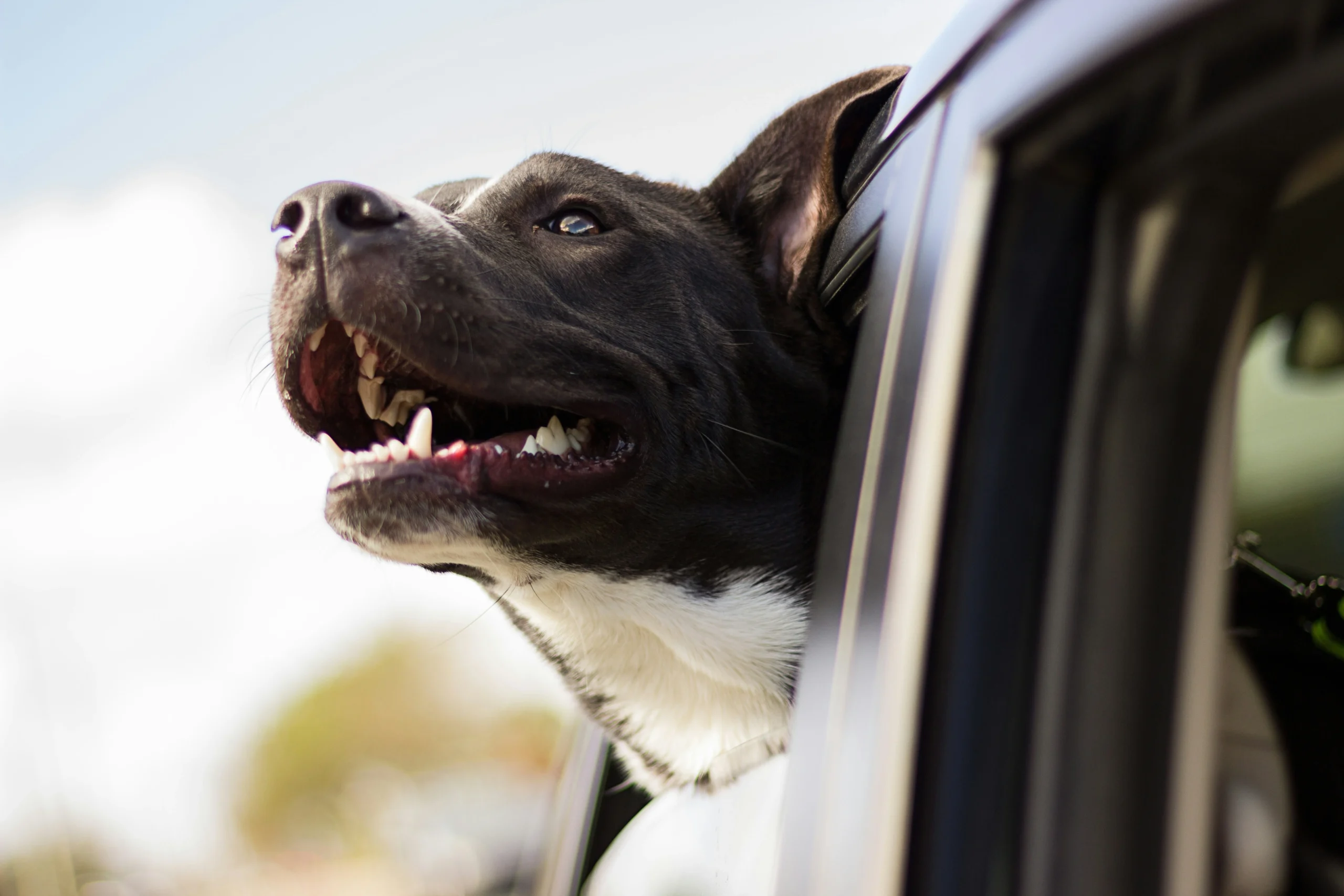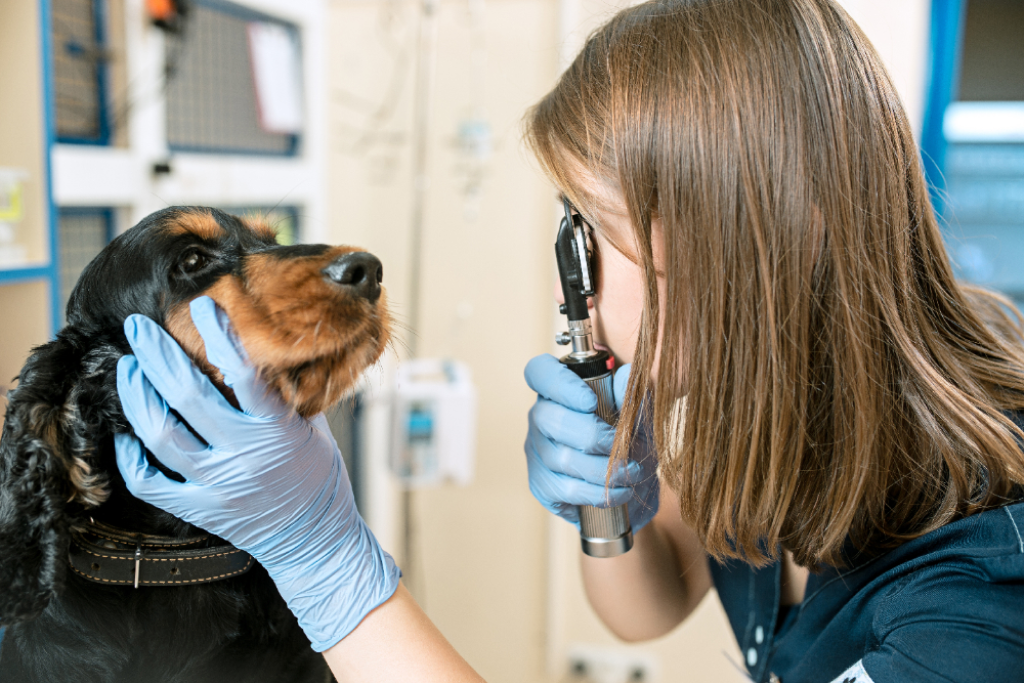Overweight or Underweight Pet?
Your pet’s weight may fluctuate, this could be due to their walking habits, nutrition, or, their overall health. In the UK alone, it’s estimated that 40% of dogs and 53% of cats are overweight. This article will go over how to tell if your pet is underweight or overweight, and what this means for your pet.
So, how can you determine whether your pet is underweight or overweight?
Feeling your pet’s body, weighing them, observing their behaviour habits, and, in some situations, seeing the vet can all help you determine whether your pet is under or overweight. You can also use the Body Conditioning Scoring (BCS)system to gather numerical information on your pet’s weight and wellness.
Continue reading to learn how to determine whether your pet is overweight and to learn about the BCS scoring system.
How to Tell if Your Pet is Overweight
We always hope that our pets are in good health, but unfortunately, this is not always the case. According to research by the vet care charity PDSA , a massive 5.5 million cats, dogs and rabbits are fed treats every day. Luxuries that owners admitted to feeding their pets included cake, chocolate, biscuits, chips, takeaway scraps and, most shocking of all, alcohol.
Over indulgence can play its part in shortening any animal’s lifespan and although most pet owners are cautious it’s important that you are aware of the damage you could be doing. Conditions linked to poor diet include diabetes, heart disease and cancer. Pets can also develop arthritis and other joint problems as a direct result of being overweight.
Often, there is no need to be concerned, and you can adopt new habits to help your pet lose a few pounds. But initially, how do you know whether your pet is overweight?
Feel Their Ribs
You can normally tell whether your pet is underweight or overweight by feeling their ribs. If the bones are prominent this can be a sign your pet is underweight. Moreover, if you can feel your pet’s ribs with light pressure, they are in good health. On the other hand, if you have to press more firmly to feel your pet’s ribs, this may indicate that your pet has excess fat around the ribcage and is overweight.
Feel Their Spine
The same test can be performed on your pet’s spine. You should be able to feel bones with light pressure; however, if the dorsal spinus processes (the bumps along the spine) are protruding, this may suggest that your pet is underweight. If you are unable to feel the spine when pressing more firmly there is a risk they’re overweight.
Look at Your Pet From All Angles
Simply glancing at your pet’s shape is a quick and easy approach to assessing their weight. When looking at their shape, if they appear rounded and oval-shaped, this could signal that your pet is overweight. Alternatively, if your pet’s body has a defined waist and rear, they are likely to be at a healthy weight.
Examine Their Behaviour & Habits
You are the best judge of your pet’s behaviour, so this step is usually a solid indicator of any weight gain. If your pet is less active, surrendered to the sofa, or has difficulty breathing, this could be due to weight gain.
Weigh Your Pet
Our pets, like us, can step on the scale too. The number on the scales can easily determine whether your pet is underweight, overweight, or at a healthy weight based on the type of pet, breed, and size. You can use the scales for free in most veterinary surgeries, or you can place your pet on the scales at home.
Consult Your Vet
Consult your veterinarian if you are concerned about your pet’s weight and would like professional guidance. They will be able to provide you with the most accurate estimate of your pet’s weight, and they will be able to advise you based on the evaluation.
Understanding the Weight Vs. Body Conditioning Score
While you can examine your pet’s weight using the methods given above, it’s also vital to understand your pet’s body condition score because it can provide a more indicative answer of your pet’s weight by comparing it to average statistics.
What is Body Conditioning Scoring (BCS)?
Our pets, like humans, come in a variety of shapes, sizes, and breeds, and weight alone is not always a good overall indicator of your pet’s general health. Looking at your pet as a whole and conducting a body conditioning scoring assessment is often the best approach to determine whether your pet is overweight or underweight.
By analysing your pet’s weight with the body condition scoring method, you can assess your pet’s ribs and waist using a scoring chart and place your pet on the body condition score scale.
How Does BCS Work?
When conducting a BCS exam, a numerical chart is used rather than a visual assessment to analyse your pet’s weight. This chart can grade the pet’s weight based on the animal’s feel rather than visual descriptors.
What Does My Pets BCS Mean?
The body condition scale ranges from 1-5 or 1-9; individual veterinarians will choose different scales based on their preferences. The 1-9 scale has more latitude and can represent minor weight gains. However, the basic premise is that the body conditioning scale ranges from 1 (malnourished) to 5 (obese). If your pet’s weight falls in the middle (3), they are at an ideal weight.
What About Their Weight? Doesn’t That Matter?
While weight is an important factor in assessing your pet’s overall health, additional factors such as type of breed, size and shape need to be taken into consideration. A BCS examination, will provide you, as a pet owner, with an accurate weight assessment and define a specific goal for your pet based on their weight, size, breed and shape.
Weight Loss Programmes for a Dog
Diet should be the focus of your dog’s weight loss program, and exercise should be promoted whenever possible. It will take time and patience, but by sticking to a strict diet and promoting regular activity for your dog, those extra pounds should start to drop off.
How Should I Begin with a Weight Loss Program for a Dog?
So you’ve examined your dog’s weight and determined that they’ve gained a few pounds, but where do you start with a weight loss program?
The best way forward is to consult with a veterinary nurse or surgeon. This way, you will be able to determine your dog’s present weight, desired weight, the amount and type of food they should be fed, and an estimate of the level of exercise they should be getting.
How Much Should I Feed My Dog for Weight Loss?
The amount of food you should feed your dog will vary depending on its breed, size, and shape. Certain types of food are more nutritious for your dog and can help with the weight loss process; your veterinarian may be able to recommend suitable brands/products.
Additional strategies to monitor and manage your dog’s food intake during their weight loss program are provided below.
- Reduce food intake by the % the pet is overweight
- Increase movement e.g kong wobble
- Invest in slow feeders
- Prescription diets
Increasing Exercise for Weight Loss
Exercise, when combined with a diet, can considerably contribute to weight loss. Begin by encouraging your dog to be more active around the house by playing with toys, having doggie play dates, and then progress to longer walks. You should keep the process slow and steady for your dog and gradually increase their level of exercise.
Additionally as lean muscle mass increases with activity, weight may not change that quickly but waist size and BCS should reduce. Therefore it’s important to monitor your dog’s waist measurements as they begin to exercise more regularly.
Monitor Progress
A regular weight check-in with your veterinarian is an excellent way to feel in charge of your dog’s weight loss process and ensure that the weight loss strategy is effective. Monitoring progress will allow you to see how far your dog has progressed with its plan and whether any changes are required.
We’ve mentioned some methods for measuring progress below.
- Nurse weight clinic
- Monthly weigh-ins
- Reassess BCS
Additionally, it’s important to monitor your dog’s waist measurements. As they begin to exercise more regularly, lean muscle mass increases. Therefore weight may not change that quickly but waist size and BCS should reduce.
Weight Loss Programmes for a Cat
Obesity in cats is common, with 53% of cats in the United Kingdom being overweight or obese. After a BCS assessment, a customised weight loss program can be created and should help your cat lose excess fat.
The process is similar to human weight loss, it will take time, and regular check-ups with a veterinarian will be necessary, but in the long run, it will be worth it
How Should I Begin with a Weight Loss Program for a Cat?
Actually starting your cat’s weight loss program can be the most difficult phase and may require a visit with a veterinarian. They will measure your cat’s BCS and will be able to provide helpful advice on how to tailor your cat’s weight loss program. In addition, they will help rule out diseases that contribute to reduced exercise such as arthritis or back pain
The regimen should simply adhere to the fundamental principles of a strict diet and regular exercise. The idea is to keep some muscle while losing fat.
How Much Should I Feed My Cat for Weight Loss?
Diet is one of the key areas of focus that will help your cat in losing weight. It is vital that you follow the measures outlined below if you want your cat to lose weight. If these measures are not followed, your cat is at risk of retaining excess weight, which can lead to health concerns.
- Change your cat’s feeding strategy, making sure they only eat from their bowl and are kept away from human food to avoid temptation.
- It is critical to limit snacks and/or treats. Make sure you only provide low-calorie goodies and use them sparingly.
- To verify that your cat is getting the right quantity of calories, use a measuring cup.
- Only give your cat nutritional cat food and avoid salty meals that are rich in calories.
- Let your neighbours know they are on a diet and not to feed extra food
Increasing Exercise for Weight Loss
Exercising is another essential component of a good weight loss program. By using toys, you can gradually increase the amount of exercise your cat receives. If your cat isn’t used to exercise, 10 minutes three times a week is a good place to start. Your cat’s goal should be to increase to 30 minutes of exercise three times a week. By doing so they will retain the muscle mass they require.
Monitor Progress
The only way to determine whether a weight loss program is effective is to track progress. By visiting your veterinarian, you can determine how far your cat has progressed and whether any changes to the plan are needed. Regular check-ins can be achieved by doing the following:
- Visiting the nurse weight clinic
- Weighing your pet monthly
- Reassess BCS monthly
How Can Your Pet Become Overweight?
Weight gain usually happens slowly, over time as a result of too many calories in and not enough out. It can be hard to notice sometimes as you spend every day with your pet. Here are some of the potential causes of weight gain.
Over Feeding
Cats and dogs can push our buttons when it comes to food. They’ve mastered the art of looking hungry even when they’ve just had their meal. This can lead us to question their portion sizes and over time you may gradually increase the size of their meals as a result of this behaviour.
Obviously we don’t want our pets to go hungry, but as a general rule of thumb, you should always follow guidance from your vet and from the food manufacturers on how much you should feed your cat or dog. If you still think your pet is hungry or they’re constantly begging for food, consult a vet before increasing their portion sizes.
Diet
It’s not just the amount of food that can cause our pet to become overweight, but the quality of their diet is also important. Treats should never make up more than 10% of your pet’s diet even when training. You should always avoid feeding them any fatty human foods such as cheese or processed meats like ham or sausage. It’s also important to ensure they don’t have access to these foods, whether they are left unattended in the house or they’re visiting a neighbour for their unhealthy second dinner.
Exercise routine
A consistent exercise routine is important for all pets, whether it be a cat, dog, rabbit or even smaller animals. Just like humans, if our pets don’t burn enough energy it’s stored on their frame as fat. A lack of exercise can also decrease our pet’s metabolic rate, meaning they burn their fat at a slower rate than a dog with a consistent exercise routine.
Depending on breed, most dogs need to be walked twice a day to improve both their physical and mental health. You’ll also want to incorporate some form of indoor play into their routine. The same applies to cats; outdoor cats should always be encouraged to exercise outside and you should make time to stimulate and play with your cat indoors.
That said, it’s important that you don’t increase your pet’s daily exercise too rapidly, any changes should be done gradually to allow their body to adjust. There’s more advice on this later in the article.
Effects of neutering, disease or injury
The neutering operation can also decrease our pet’s metabolism and cause an increase in weight. You can reduce the chance of your pet gaining weight after the operation by reducing calorie intake by 10-15% or feeding a ‘neutered diet’
Some causes of weight loss are out of our control, including illnesses or injuries. As their owner, it’s important that you spot signs of illnesses that could be causing your pet to increase weight and you seek advice on managing the effects. Further weight gain on top of injury or illness can only make things worse.
Anxiety
For whatever reason, anxiety may cause your dog to lose its appetite and feel too unsafe to eat. Moving house, changing owners, fireworks and noises, or new people in a house can all cause anxiety without it being anyone’s fault. Your Cheshire vets team can offer advice on your dog’s behaviour.
Why Does Your Pet’s Weight Matter?
Our pet’s weight is important for their physical and mental wellbeing. They need to maintain an active lifestyle to be healthy and their weight can get in the way of that.
Disease risk
An increase in body weight is a risk factor and cause for all kinds of diseases for cats and dogs. Some potential risks include: –
- Osteoarthritis
- Cardiovascular disease
- Diabetes
- Reduced immune function and liver function due to a fatty liver
- Urinary tract infections
- Cancers
It’s worth pointing out that many of these conditions may also be the cause of your pet gaining weight.
Injury risk
An increase in our pet’s weight places more pressure on their bones and joints. If your pet is already susceptible to injury, their weight can accentuate the problem (for example cruciate rupture). Owners of breeds that are prone to certain injuries or owners of dogs that have already suffered injuries in the past should be especially vigilant. It’s also the start of a vicious circle as injuries not only become more common in overweight pets, but injured pets also find it hard to lose weight.
Mobility
Just like humans, our pet’s mobility decreases as they get older. An increase in body weight will speed up the effects of this change over time. If you want your pet to live a happy and mobile life into their old age, it’s important that you maintain a healthy weight whilst they are younger.
Playfulness and general mood
You may think your pet will be happier with more food when they’re begging for it at your feet, but a healthier pet is always a happier pet. Your pet will have more energy and be more playful and exuberant if they maintain a healthy weight.
What Health Conditions Can Obesity Cause in Pets?
Nobody wants their pet to be unhealthy and overweight, but it can happen without you realising, and one day you discover that your pet isn’t as active as usual and/or is eating more than usual.
Obesity in our pets is the same as it is in humans; excess body fat can cause serious consequences on their health, welfare, and quality of life. Unfortunately, if your pet is obese, health conditions can pose a serious threat to your pet’s life. Obesity can induce the following conditions, which we have listed below.
Cats:
The below health conditions are specifically related to obesity in cats
- Diabetes
- Bladder problems
- Liver disease
- Arthritis
- Breathing problems
- Cancer
- Matts and skin problems associated with reduced grooming
Dogs:
The health conditions listed below are the common conditions that obesity can cause in dogs.
- Arthritis
- Urine incontinence
- Back problems
- Cruciate ligament problems
- Breathing problems
- Breathing problems in flat-faced breeds
- Cancer
- Heatstroke
Other Pets:
Obesity does not only impact dogs and cats; other pets, such as rabbits, can suffer serious health consequences if they are obese. We have highlighted the additional health conditions that are common amongst all types of pets below.
- Diabetes
- Heart disease
- Respiratory distress
- High blood pressure
- Cancers
- Fly-strike and other skin diseases
Can Health Conditions Contribute to Obesity in Pets?
Certain health conditions predispose our beloved pets to obesity. In such circumstances, extra attention should be paid to their diet and level of activity.
Unfortunately, some health conditions cannot be avoided, therefore additional weight gain is to be expected, but it is critical that your pet has regular health checks if this is the case. We have identified some common health conditions that may predispose your pet to weight gain below.
Predispositions to Obesity
Obesity predisposition suggests that your pet is more likely to become obese owing to hereditary factors. Obesity in our pets is said to be caused by their type of breed, age, genetics, and sex. This is common in both cats and dogs, as well as other animals.
Medical Conditions That Can Contribute to Obesity
Obesity is sometimes associated with some common health disorders found in our pets, including:
- Diabetes in cats
- Cushing’s syndrome
- Arthritis
- Heart disease, lung disease, or arthritis in cats
Does Pet Weight Loss Food Work?
Prescription weight-loss food is particularly successful when used with a tailored weight loss program. These aim to help your pet lose body fat, maintain muscle and decrease hunger whilst being a balanced form of nutrition. However, you must use caution and consult your vet before using them.
When combined with frequent exercise, your pet should be able to return to his or her ideal weight in no time.
We have discussed more regarding what you should be feeding your pet for weight loss below.
Cats:
High fibre/low-fat foods are the best choice for your cat to help them lose weight. You can increase muscle mass by feeding them a high fibre diet, allowing your cat to absorb more and feel fuller. Alternatively, feeding your cat a high protein/low carbohydrate food may also delay an empty stomach, leaving your pet feeling fuller for longer.
Your veterinarian will be able to advise you on the best course of action for your cat.
Dogs:
To help your dog lose weight, the fundamental premise is that the food you feed them should contain above-average protein, below-average fat, and below-average calories.
Other Pets:
Other pets including rabbits should eat a diet that includes fresh produce, dry food, and hay. Seeds and cereals are healthy options for hamsters. Hay and grass are also appropriate foods for a guinea pig.
Weight Loss Clinics at Knutsford Vets
Knutsford Vets provides a Nurse-led weight loss service to help assess your pet’s weight and overall health. Our experienced team can help your pet and provide guidance on their weight based on breed, size, and sex.
If your pet is underweight or overweight, it can create major health problems and risk their life. By visiting our specialised team, we can help your pet get back to normal weight and back on track.
If you suspect that your pet is underweight or overweight, schedule an appointment with us right away and we’ll be happy to help.





